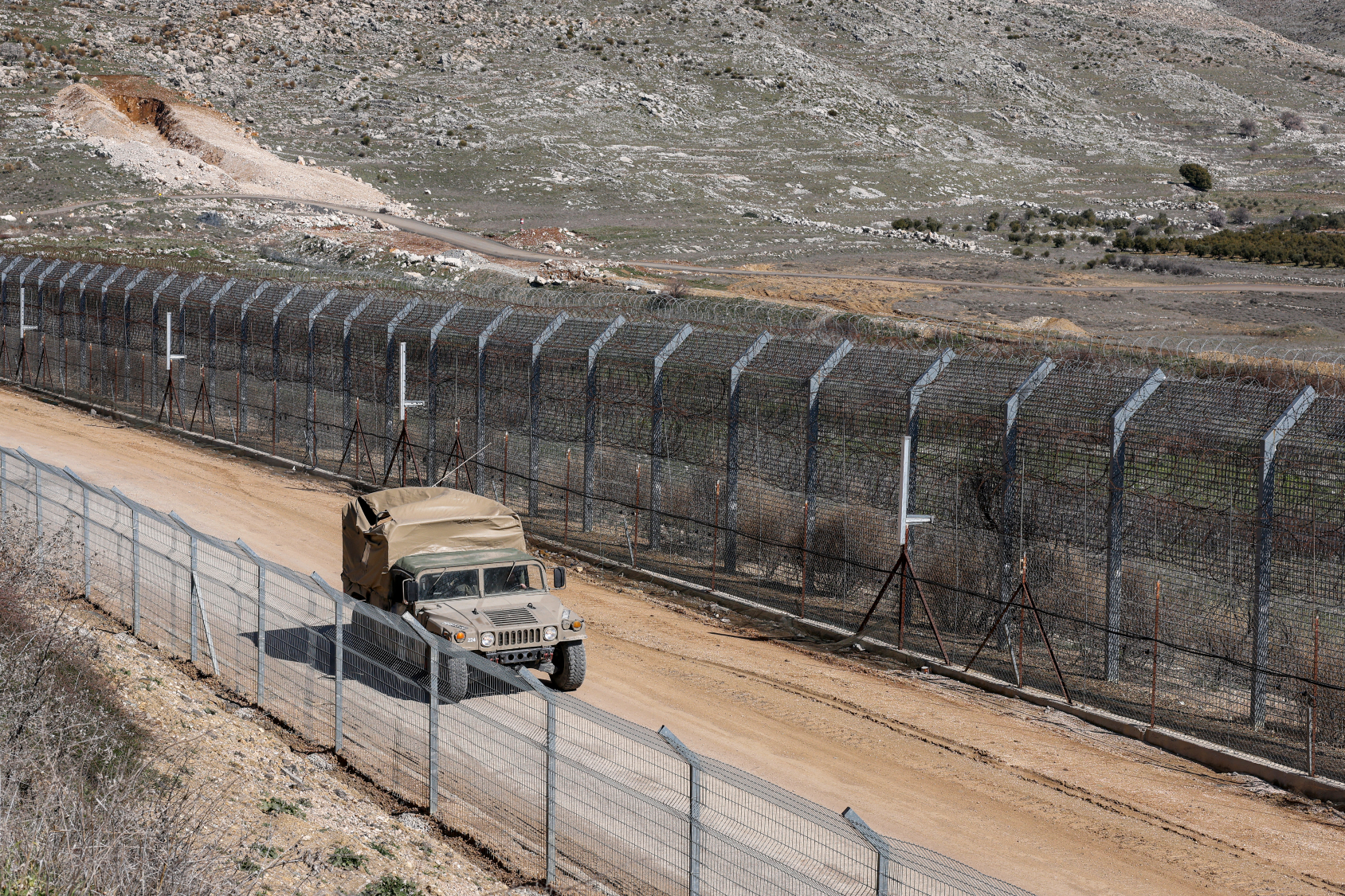How gene editing will help solve the world's looming food crisis
Imagine super-crops that could endure harsher, drier, and hotter growing conditions. Or crops that are impervious to fungus or disease.

A global food crisis is looming. And the best place to address it could be in a scientist's lab.
The World Bank forecasts that by 2050, at least 50 percent more food will have to be produced to feed a world population that will have climbed from today's 7 billion to 9 billion; climate change, meanwhile, could cut crop yields by more than 25 percent in that same time frame.
What's a hungry planet to do? Well, imagine super-crops that could endure harsher, drier, and hotter growing conditions. Or crops that are impervious to fungus or disease. Others could be power breeders or pack more nutritional punch. Some might last longer before rotting.
Subscribe to The Week
Escape your echo chamber. Get the facts behind the news, plus analysis from multiple perspectives.

Sign up for The Week's Free Newsletters
From our morning news briefing to a weekly Good News Newsletter, get the best of The Week delivered directly to your inbox.
From our morning news briefing to a weekly Good News Newsletter, get the best of The Week delivered directly to your inbox.
That's the promise of CRISPR-Cas9 — CRISPR for short, or Clustered Regularly Interspaced Palindromic Repeats if you want to show off — the technology that is revolutionizing the field of genetic engineering with its speed, ease, and precision.
CRISPR debuted in 2012, but its power and potential have come into focus in the past few years. The tool was named Science's breakthrough of the year in 2015 and one of MIT Technology Review's 10 breakthroughs for 2016. Most researchers believe its biggest impact will be helping to accelerate the drug pipeline, but it has also received attention for accomplishments that range from the ethically challenging (editing human embryos for the first time) to the outlandish (tiny pigs created to be sold as pets).
Meanwhile, CRISPR's potential to reshape agriculture has been largely unsung — but is tremendous nonetheless.
In the past few years, research into CRISPR-edited crops has been steady. Chinese scientists endowed bread wheat with a resistance to powdery mildew. Japanese scientists extended tomatoes' life by turning off genes that help control ripening. And U.K. researchers targeted a gene that influences "pod shattering" in a broccoli-like vegetable called brassica, and a gene that affects grain dormancy in barley — in other words, both functions that increase the odds that a seed will grow. Other editing projects have focused on potatoes, soybeans, and rice.
A free daily email with the biggest news stories of the day – and the best features from TheWeek.com
How does it work? Many liken CRISPR's exacting abilities to the find-and-replace function on a computer; it homes in on the gene to be edited and then makes a change, whether a deletion, repair, or in some instances, an addition. "CRISPR ranks among the most powerful additions to biology's tool kit in the past half a century," Stephen S. Hall wrote in Scientific American. As it relates to agriculture, Hall points out that it is "the least biologically disruptive form of plant breeding that humans have ever devised."
Some companies are looking to transition from research to reality. Caribou Biosciences, the startup co-founded by one of the technology's inventors, Jennifer Doudna, last year partnered with DuPont. Their project: developing drought-resistant corn as well as wheat that can breed like a hybrid rather than self-pollinate (hybrids are more vigorous, and yields can increase by 10 to 15 percent). Testing in the field begins this spring. "We are talking about bringing products to market in five to 10 years," Neal Gutterson, vice president for agricultural biotechnology at DuPont Pioneer, told MIT Technology Review. "That is a pretty damn good time line compared to other technology."
The quicker timeline is possible because gene-edited crops have not been tagged by regulators as genetically modified organisms. The U.S. Department of Agriculture's Animal and Plant Health Inspection Service made the classification decision last year, and it holds as long as DNA from other species has not been inserted into the genome; the introduction of foreign genes would tip it into the GMO camp. (European regulators are scheduled to make their ruling on the subject later this year.) "They basically considered these as just standard plants, as if they were generated by chemical mutagens or gamma rays or some nonregulated technology," Daniel Voytas, an academic and company-affiliated scientist, told Scientific American.
The decision is a boon for business — Voytas estimated that the regulatory review process can cost up to $35 million and take as long as five-and-a-half years. The absence of such expense also means that CRISPR-fueled work would be possible for smaller companies as well as big agribusinesses.
Whether the public will lump CRISPR-edited foods in with so-called GMO Frankenfoods, like the ever-growing Atlantic salmon, remains to be seen. As David Caroll, president of Giorgi Mushroom Co., told The Packer in response to a newly developed, non-browning mushroom: "Whether something that is a non-traditional [bred] mushroom is marketable is really in the hands of the consumer."
But in the long run, what's at stake with CRISPR crops could be a lot more than what the average supermarket customer is comfortable buying. As Tom Parrett wrote of the technology in a Newsweek feature last year, "Biologists and geneticists are confident it can help them build a second Green Revolution — if we'll let them."
Alexis Boncy is special projects editor for The Week and TheWeek.com. Previously she was the managing editor for the alumni magazine Columbia College Today. She has an M.F.A. from Columbia University's School of the Arts and a B.A. from the University of Virginia.
-
 One great cookbook: 'Salt to Taste'
One great cookbook: 'Salt to Taste'The Week Recommends Your roadmap to satisfying Italian home cooking
-
 How astronaut Jim Lovell 'inspired generations'
How astronaut Jim Lovell 'inspired generations'Instant Opinion Opinion, comment and editorials of the day
-
 US to take 15% cut of AI chip sales to China
US to take 15% cut of AI chip sales to ChinaSpeed Read Nvidia and AMD will pay the Trump administration 15% of their revenue from selling artificial intelligence chips to China
-
 How China uses 'dark fleets' to circumvent trade sanctions
How China uses 'dark fleets' to circumvent trade sanctionsThe Explainer The fleets are used to smuggle goods like oil and fish
-
 One year after mass protests, why are Kenyans taking to the streets again?
One year after mass protests, why are Kenyans taking to the streets again?today's big question More than 60 protesters died during demonstrations in 2024
-
 What happens if tensions between India and Pakistan boil over?
What happens if tensions between India and Pakistan boil over?TODAY'S BIG QUESTION As the two nuclear-armed neighbors rattle their sabers in the wake of a terrorist attack on the contested Kashmir region, experts worry that the worst might be yet to come
-
 Why Russia removed the Taliban's terrorist designation
Why Russia removed the Taliban's terrorist designationThe Explainer Russia had designated the Taliban as a terrorist group over 20 years ago
-
 Inside the Israel-Turkey geopolitical dance across Syria
Inside the Israel-Turkey geopolitical dance across SyriaTHE EXPLAINER As Syria struggles in the wake of the Assad regime's collapse, its neighbors are carefully coordinating to avoid potential military confrontations
-
 'Like a sound from hell': Serbia and sonic weapons
'Like a sound from hell': Serbia and sonic weaponsThe Explainer Half a million people sign petition alleging Serbian police used an illegal 'sound cannon' to disrupt anti-government protests
-
 The arrest of the Philippines' former president leaves the country's drug war in disarray
The arrest of the Philippines' former president leaves the country's drug war in disarrayIn the Spotlight Rodrigo Duterte was arrested by the ICC earlier this month
-
 Ukrainian election: who could replace Zelenskyy?
Ukrainian election: who could replace Zelenskyy?The Explainer Donald Trump's 'dictator' jibe raises pressure on Ukraine to the polls while the country is under martial law